Geocaching: Find the Fun!
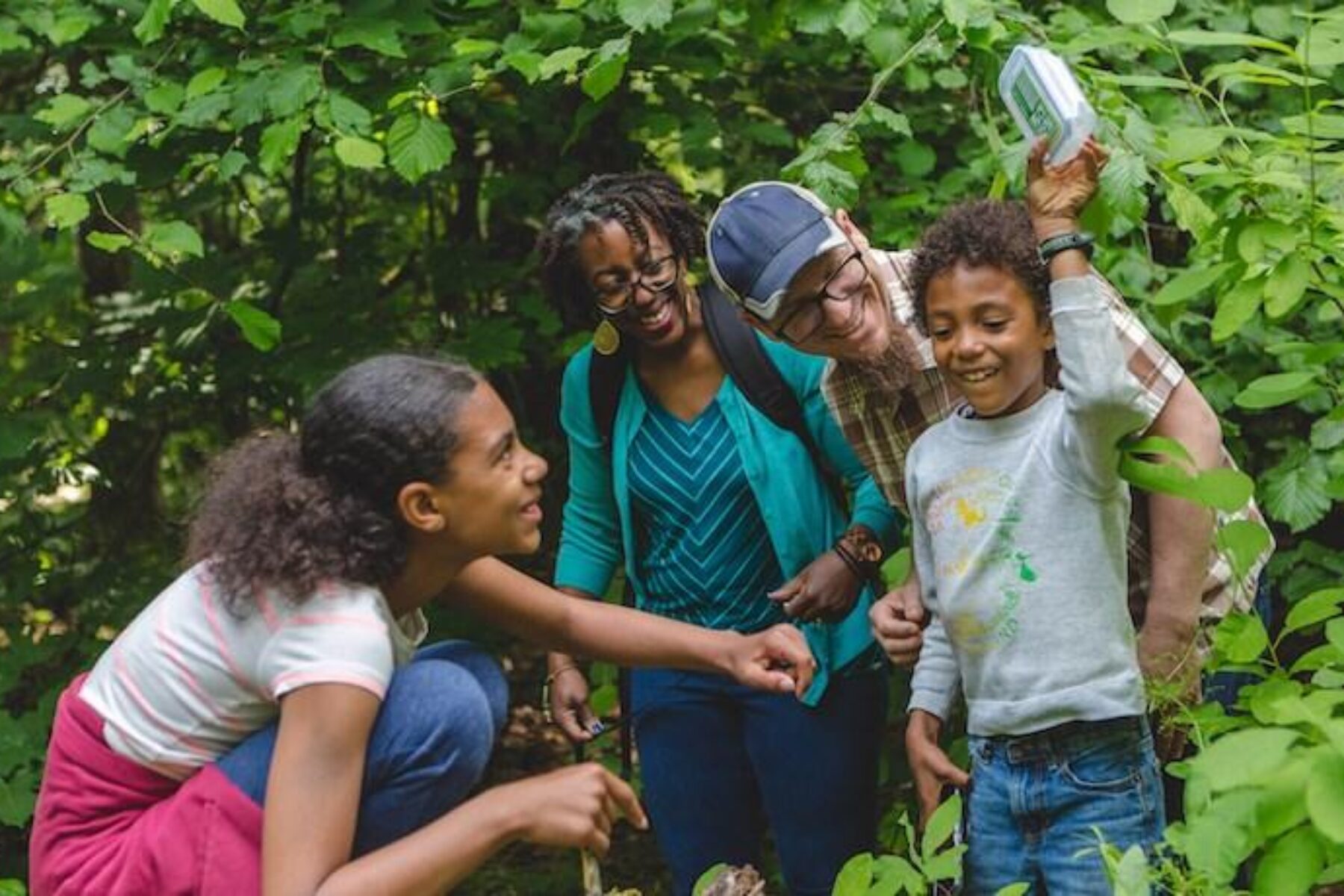
With millions of geocaches hidden throughout the world, there’s a very good chance one is located on your favorite trail!
Geocaching is a high-tech game of hide and seek. Put simply, someone hides a container for others to find. The game started in early 2000. When Geocaching.com launched later that year, only 75 geocaches existed. Today, there are more than 3.3 million geocaches in 190 countries.
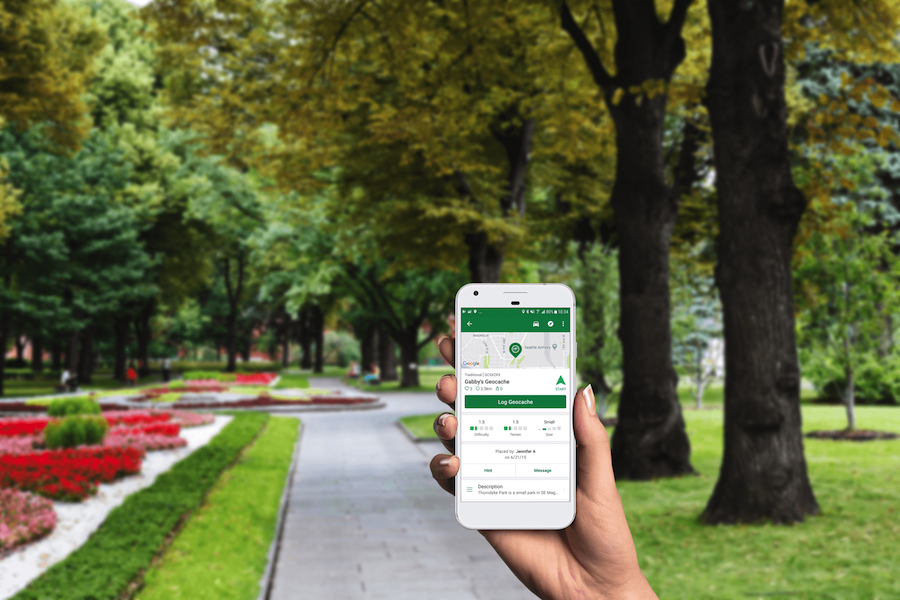
To play, participants use the Geocaching® app and/or a GPS device to navigate to cleverly hidden containers called geocaches. Trails are very popular geocache locations, but you’ll find caches along city sidewalks, at local parks and even on the International Space Station!
Geocaches come in all different shapes, sizes and difficulties—geocache creativity is endless. Some are larger containers, others are canisters the size of your fingernail. Just remember, geocaches never require digging. You can tailor your adventure based on the difficulty and terrain ratings assigned by the person who placed the cache, from 1 (easiest) to 5 (most challenging).
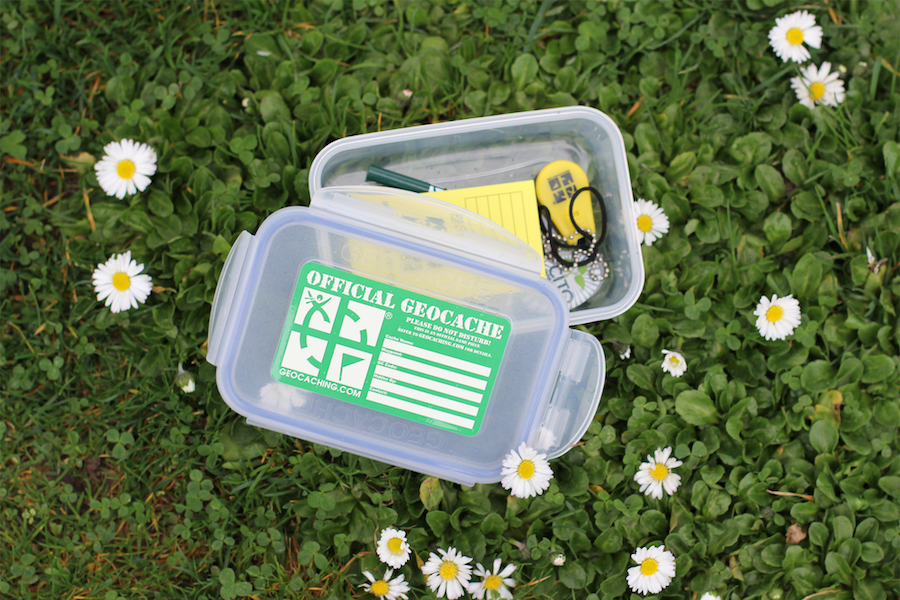
Getting Started
- Create a free basic account, and use Geocaching.com or the free Geocaching app to search for geocaches near your location. For those just starting out, consider focusing on caches with lower difficulty and terrain ratings.
- Once you select a cache, go outside and use the app to navigate to it. Don’t forget to bring a pen so you can sign the logbook inside the geocache.
- When you arrive at the location, use the app to review recent activity and the hint for clues.
- Once you find a geocache, open it and sign the logbook. Larger geocaches often contain swag items (small toys or trinkets). The rule of thumb: If you take something, leave something of equal or greater value. You might also discover trackables, which are meant to move from geocache to geocache.
- Rehide the container exactly as you found it, and share your experience online with the geocaching community.
Cacher Community
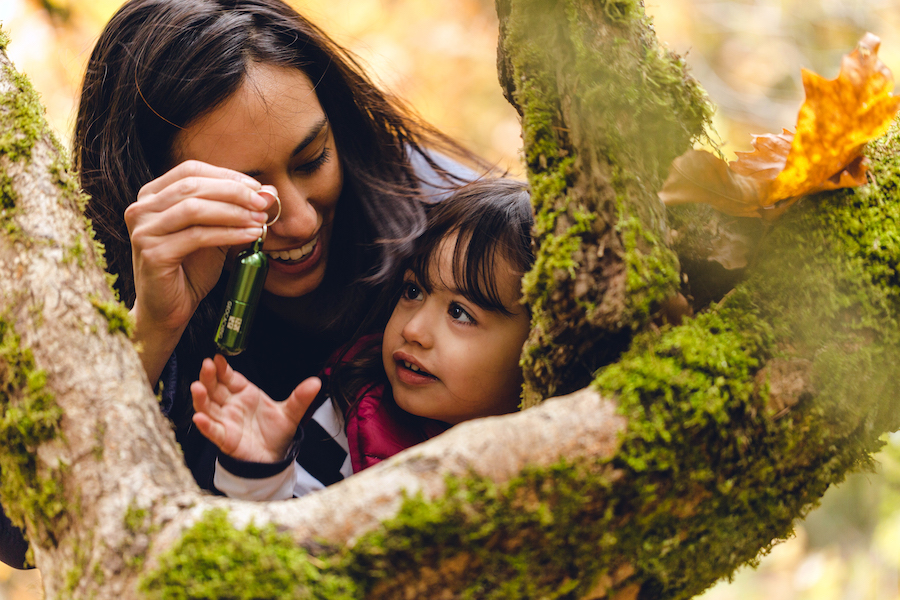
In addition to hiding geocaches, the worldwide geocaching community hosts thousands of geocaching events each year. Events are a wonderful way to meet your fellow cachers, learn more about the game and get tips for your next outing. Events can range from a small 30-minute gathering to “Mega” and “Giga” events that attract hundreds or thousands of attendees.
Geocaching offers something for everyone, from families with children to retirees. Some geocachers play the game to see how many finds they can accumulate, while others enjoy finding caches in new states, provinces or countries. The game can add excitement to a familiar trail or lead you to new trails you may not have known about!
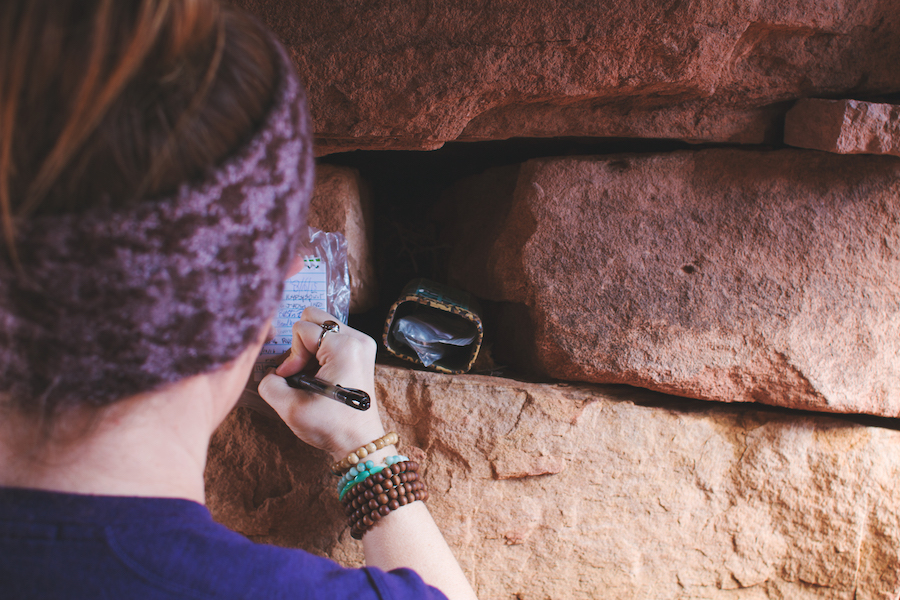

Donate
Everyone deserves access to safe ways to walk, bike, and be active outdoors.



